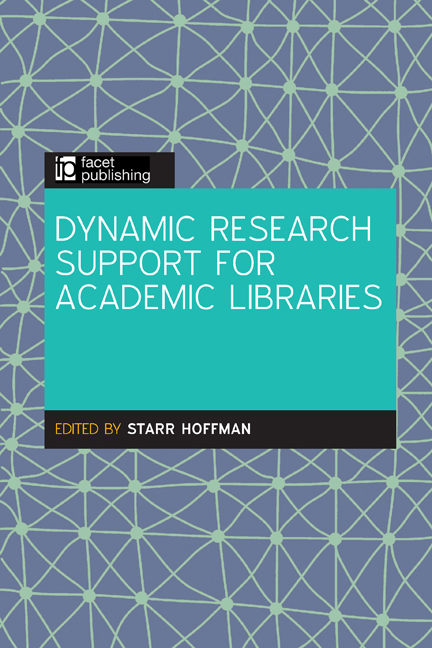Book contents
- Frontmatter
- Contents
- Editor and contributors
- Preface
- Introduction: a vision for supporting research
- PART 1 TRAINING AND INFRASTRUCTURE
- Introduction to Part 1
- 1 Constructing a model for Mexican libraries in the 21st century
- 2 Researching illustrated books in art history: a brief history of the Biblioteca Digital Ovidiana project
- 3 The ‘Developing Librarian’ digital scholarship pilot training project
- PART 2 DATA SERVICES AND DATA LITERACY
- PART 3 RESEARCH AS A CONVERSATION
- Index
Introduction to Part 1
from PART 1 - TRAINING AND INFRASTRUCTURE
Published online by Cambridge University Press: 08 June 2018
- Frontmatter
- Contents
- Editor and contributors
- Preface
- Introduction: a vision for supporting research
- PART 1 TRAINING AND INFRASTRUCTURE
- Introduction to Part 1
- 1 Constructing a model for Mexican libraries in the 21st century
- 2 Researching illustrated books in art history: a brief history of the Biblioteca Digital Ovidiana project
- 3 The ‘Developing Librarian’ digital scholarship pilot training project
- PART 2 DATA SERVICES AND DATA LITERACY
- PART 3 RESEARCH AS A CONVERSATION
- Index
Summary
Often, articles and books on research support in academic libraries focus on services. While services and service models will certainly be explored in later sections of this book, this initial section takes a closer look at more fundamental concerns: library infrastructure and training librarians for new support models.
Planning for change
Looking at training and infrastructure necessitates first taking a holistic view of our libraries through the lens of organizational development. The key goal that organizational development seeks to achieve is to become an adaptive, flexible organization, to continuously improve. Why is continual improvement needed in academic libraries? It's needed because we operate in a culture of change.
Higher education is in a state of flux, seeking ways to be more transparent, accountable and cost-effective. As new practices in teaching, learning and research continually emerge, student and faculty work is being shaped by them. As libraries, we're constantly affected by new technologies and evolving methods of information dissemination. Library budgets are likely to never return to their pre-recession highs. We must be observant of these conditions, and of changing student and faculty needs, and be ready to respond quickly.
Planning for change should begin by evaluating the library's current infrastructure, staff skills and institutional needs. Evaluating the infrastructure might include listing any necessary maintenance activities, as well as assessing how the current space is used. Space assessments could include ethnographic observations of student and faculty use of library space, such as those detailed by Nancy Fried Foster and Susan Gibbons in their ground-breaking study at the University of Rochester (Foster and Gibbons, 2007).
Following the work of Foster and Gibbons, ethnographic and observation studies are increasing in popularity (Council on Library and Information Resources, 2012). These methods involve observing users in the library space (and in some cases, how they research and learn outside the library), to learn more about their habits and values. These methods include taking note of where users are in the library space and what they are doing in it at different times throughout the day.
- Type
- Chapter
- Information
- Dynamic Research Support for Academic Libraries , pp. 3 - 8Publisher: FacetPrint publication year: 2016



